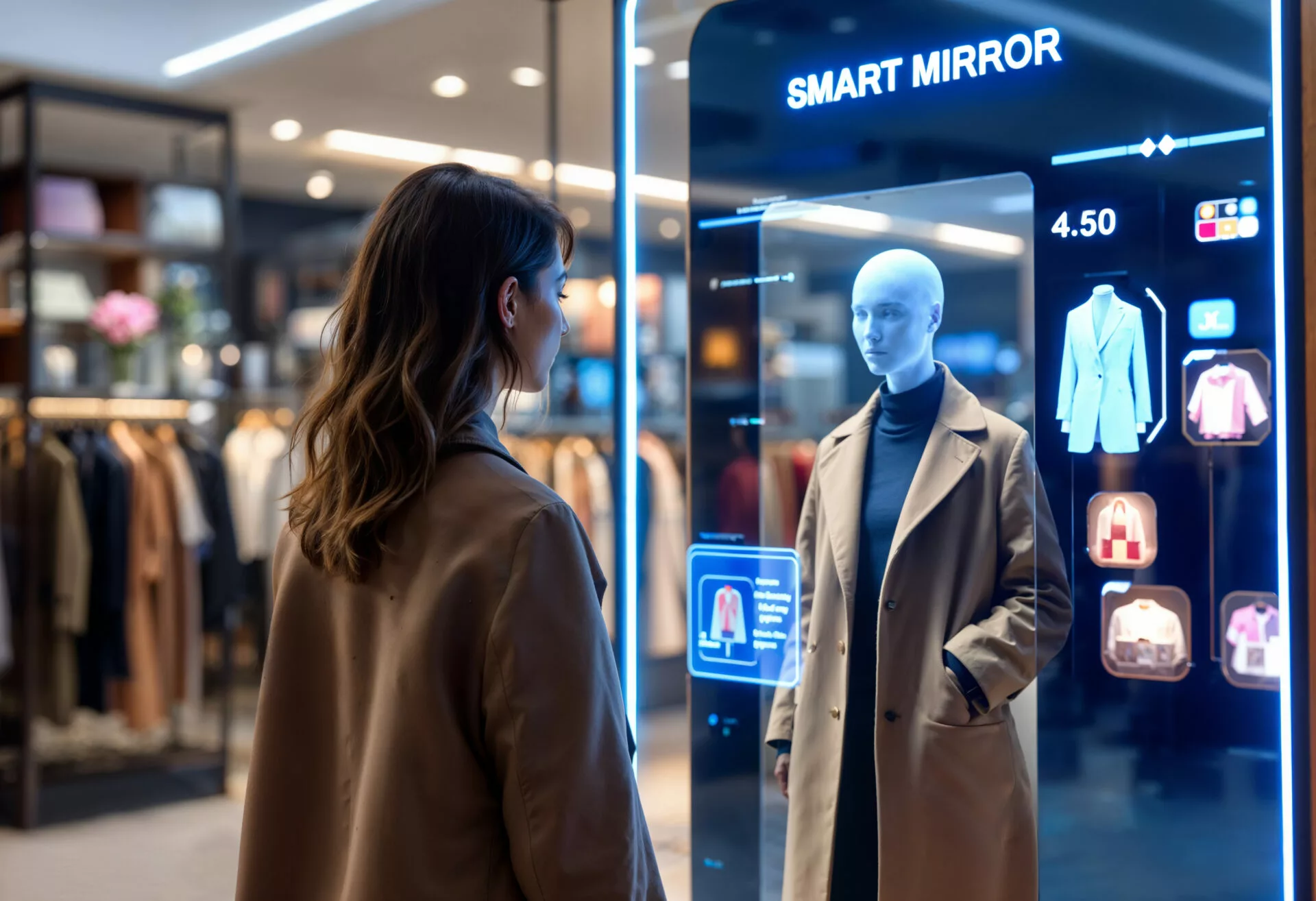The physical store is far from dead — it’s just becoming smarter. Thanks to augmented reality (AR), retail is undergoing a profound transformation where physical environments are layered with interactive, personalized, and data-rich experiences. At the heart of this evolution are AR digital tags: small visual or sensor-based markers that bridge the gap between static shelves and dynamic digital content.
So how exactly are these AR tags changing the way we shop — and what does this mean for brands?
What Are AR Digital Tags?
AR digital tags are QR codes, NFC chips, image markers, or spatial anchors that trigger augmented content when viewed through a smartphone, AR glasses, or tablet. When a customer points their device at the tag, a digital layer appears over the real-world object, revealing product information, animations, reviews, inventory status, or even live price updates.
Unlike traditional signage, AR tags are interactive, scalable, and dynamic. They don’t just inform — they engage.
Reimagining the Shelf
In a traditional store, a product’s value is limited to its packaging and its position on a shelf. With AR in retail, that changes dramatically. A simple bag of coffee can now “speak” to the customer — projecting its origin story, showing a brewing tutorial, or offering a loyalty discount in real-time.
This is no longer science fiction. Brands like Sephora, IKEA, and Nike are already using augmented reality in retail to add storytelling, interactivity, and personalization to everyday shopping.
Boosting Consumer Engagement
People are drawn to stories, not just products. AR digital tags allow physical spaces to come alive, turning aisles into mini-theaters of brand experience. Want to know where your wine was made? Scan the bottle. Curious how that chair fits in your living room? Tap to place it in AR. Want to unlock a hidden deal? Follow the animated mascot that appears when you scan the floor.
This type of immersive retail experience builds emotional connection and prolongs dwell time — both key drivers of conversion.
Personalized Shopping, at Scale
The beauty of AR in retail is that it scales. Every customer can receive a personalized experience, even in a crowded store. AR tags can adapt content based on time of day, previous purchases, or user preferences. A returning customer might see a “Welcome back” message and suggestions tailored to their profile, while a new customer gets an introduction to the brand.
This level of real-time personalization used to be exclusive to e-commerce. Now, digital tags bring it into the real world.
From Static Pricing to Dynamic Commerce
Prices on physical shelves are typically fixed. But with AR digital tags, pricing can become fluid and responsive. Flash discounts, real-time promotions, or bundle deals can be overlaid through AR without any physical change to the store layout.
It gives retailers the agility of e-commerce without sacrificing the tactile experience of in-person shopping.
Making Data Visible
Retailers thrive on data, but most of it has been hidden from the customer. AR in retail changes that by making data visible — in engaging, digestible ways. Shoppers can instantly access product reviews, sustainability ratings, restock dates, or even customer-generated content.
And for staff, AR tags can also function as training tools or stock management assistants — delivering step-by-step guides or live inventory stats.
Challenges and Considerations
Of course, implementing AR digital tags comes with challenges. It requires careful UX design, strong internet connectivity, and consumer education. No one wants to download five different apps just to scan products.
That’s why leading retailers are turning to web-based AR experiences that work directly through the browser — reducing friction and increasing adoption.
The Future is Phygital
Retail is no longer just physical or digital — it’s phygital. A seamless blend of both. And AR digital tags are one of the most elegant ways to bridge that divide. They empower brands to transform a walk down the aisle into an adventure, a decision point into a dialogue.
For retailers willing to invest in the experience, AR in retail isn’t just a gimmick. It’s a tool for deeper engagement, smarter merchandising, and stronger sales.
Key Takeaways
- AR digital tags enhance physical stores with dynamic, interactive content
- They enable personalized experiences without increasing staff workload
- Brands can use AR in retail for storytelling, pricing, and product data
- Augmented reality makes every square meter of shelf space more powerful
- The result is higher engagement, better conversion, and long-term loyalty

